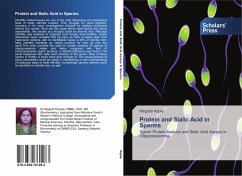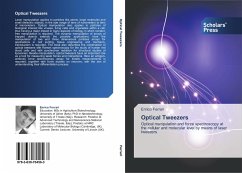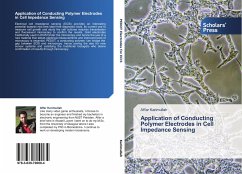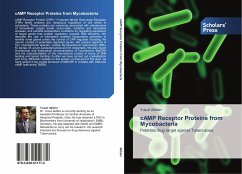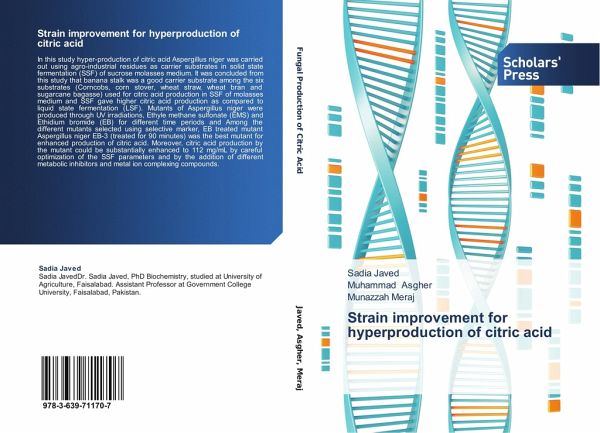
Strain improvement for hyperproduction of citric acid
Versandkostenfrei!
Versandfertig in 6-10 Tagen
45,99 €
inkl. MwSt.

PAYBACK Punkte
23 °P sammeln!
In this study hyper-production of citric acid Aspergillus niger was carried out using agro-industrial residues as carrier substrates in solid state fermentation (SSF) of sucrose molasses medium. It was concluded from this study that banana stalk was a good carrier substrate among the six substrates (Corncobs, corn stover, wheat straw, wheat bran and sugarcane bagasse) used for citric acid production in SSF of molasses medium and SSF gave higher citric acid production as compared to liquid state fermentation (LSF). Mutants of Aspergillus niger were produced through UV irradiations, Ethyle metha...
In this study hyper-production of citric acid Aspergillus niger was carried out using agro-industrial residues as carrier substrates in solid state fermentation (SSF) of sucrose molasses medium. It was concluded from this study that banana stalk was a good carrier substrate among the six substrates (Corncobs, corn stover, wheat straw, wheat bran and sugarcane bagasse) used for citric acid production in SSF of molasses medium and SSF gave higher citric acid production as compared to liquid state fermentation (LSF). Mutants of Aspergillus niger were produced through UV irradiations, Ethyle methane sulfonate (EMS) and Ethidium bromide (EB) for different time periods and Among the different mutants selected using selective marker, EB treated mutant Aspergillus niger EB-3 (treated for 90 minutes) was the best mutant for enhanced production of citric acid. Moreover, citric acid production by the mutant could be substantially enhanced to 112 mg/mL by careful optimization of the SSF parameters and by the addition of different metabolic inhibitors and metal ion complexing compounds.





